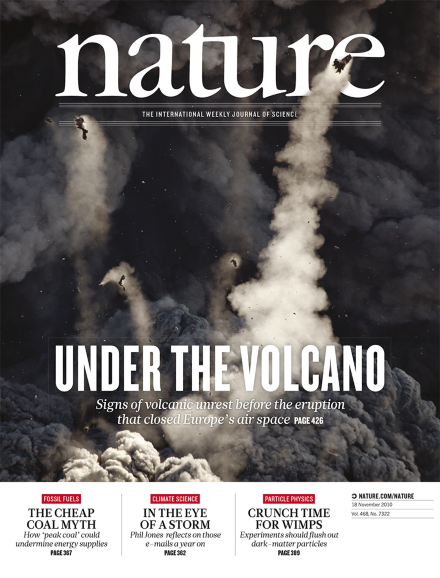Volume 468 Issue 7322, 18 November 2010
Editorial
World View
Research Highlights
Seven Days
News
Correction
News
News Feature
Comment
Books & Arts
Correction
Correspondence
Obituary
News & Views
Correction
Review Article
-
The moment of truth for WIMP dark matter
Nature Outlook:

